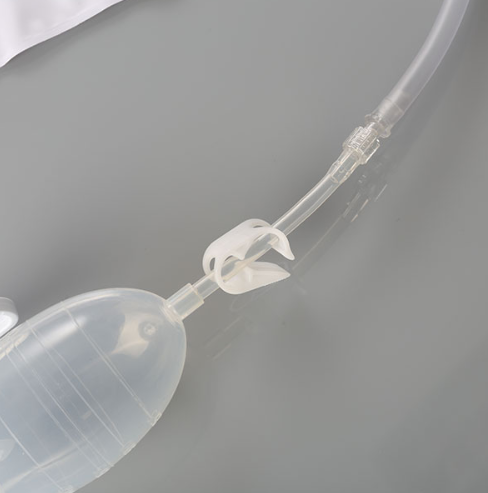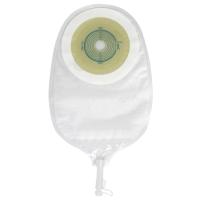A Silicone reservoir with Drainage Bag is a medical device used for
post-operative wound management to aid in the drainage of fluids
from closed surgical wounds. Here are some additional details about
this system:
Function: The silicone reservoir serves as a collection chamber for
fluids draining from the wound. The drainage bag attached to the
reservoir provides a larger capacity for fluid collection, allowing
for extended drainage without the need for frequent emptying.
Material: Silicone is often chosen for the reservoir due to its
biocompatibility, flexibility, and durability. It is non-reactive
with bodily tissues and can be easily sterilized, making it
suitable for medical applications.
Capacity: The drainage bag typically has a larger capacity compared
to the reservoir alone, allowing for the collection of a
significant volume of fluids over an extended period. This can be
advantageous in situations where high fluid output is expected.
Convenience: The combination of the reservoir and drainage bag
provides convenience for healthcare providers and patients by
reducing the frequency of emptying and simplifying the management
of wound drainage.
Monitoring: Healthcare professionals can easily monitor the fluid
output by observing the level of fluid in the drainage bag.
Monitoring the drainage volume and characteristics is essential for
assessing the healing progress and detecting any signs of
complications.
Mobility: Some drainage bags come with features that allow for
mobility, enabling patients to move around more freely while the
drainage system remains attached and functional.
Maintenance: Proper care and maintenance of the silicone reservoir
with drainage bag are crucial for preventing infections and
ensuring effective wound healing. This includes regular emptying,
cleaning, and monitoring for any signs of complications.

Q&A:
Does silicone dissolve in water?
Silicone fluid is highly soluble in hydrocarbon solvents such as
toluene, xylene, ligroin, and mineral spirits as well as in
chlorinated hydrocarbons. However, it is insoluble in ethanol, methanol, and water.
How does a wound drainage reservoir work?
A wound drainage reservoir, such as the Silicone Closed Wound
Drainage System with an anti-reflux valve, functions as a crucial
component in post-operative wound management. Here's how a typical
wound drainage reservoir works:
Fluid Collection: After a surgical procedure, the wound may produce
fluids like blood, pus, or serous fluid. The drainage reservoir is
connected to a drain tube that is inserted near the surgical site.
As fluids accumulate in the wound, they flow into the drain tube
and collect in the reservoir.
Anti-reflux Valve: The reservoir is equipped with an anti-reflux
valve. This valve allows fluids to flow in only one direction—out
of the wound and into the reservoir. It prevents the backflow of
fluids, maintaining a unidirectional flow and preventing
contamination of the wound site.
Gravity Drainage: In most cases, wound drainage reservoirs rely on
gravity for drainage. The reservoir is typically placed below the
level of the wound so that fluids can flow downwards through the
drain tube into the reservoir.
Monitoring: Healthcare providers regularly monitor the fluid levels
in the reservoir to assess the amount and type of drainage.
Monitoring helps determine the healing progress, detect any signs
of infection, and ensure that the drainage system is functioning
effectively.
Emptying: When the reservoir fills up with fluids, it needs to be
emptied to create space for continued drainage. Healthcare
professionals carefully empty the reservoir, dispose of the
collected fluids in a safe manner, and maintain a record of the
volume and characteristics of the drainage.

Maintenance and Care: Proper care and maintenance of the wound
drainage reservoir are essential for preventing infection and
ensuring optimal wound healing. This includes keeping the drainage
site clean, securing the drain tube, and following healthcare
provider instructions for managing the reservoir.

Usage:
- Connect the outside end of the drainage tube with the sphere
firmly, squeeze the sphere by hand, plug the exhaust (liquid) mouth
immediately after discharging air, loosen the sphere, and suspend
it in a slightly lower position on the side of the patient, so as
to achieve sustainable drainage.
- If the drainage ball can not maintain negative pressure, the
import and export of the ball should be checked, and if necessary,
the ball should be tightly screwed (plugged).







